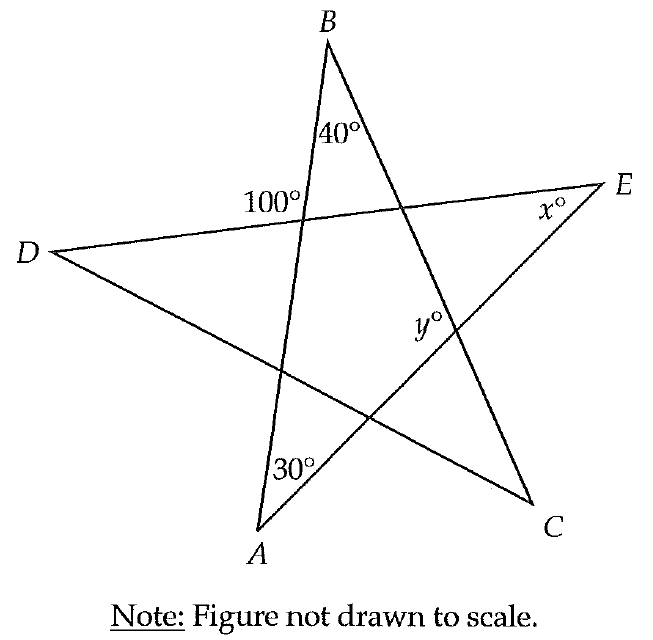PARALLEL AND PERPENDICULAR LINES WORKSHEET
Problem 1 :
Think of each segment in the diagram as part of a line.

Which of the lines appear to fit the descriptions given below?
(i) Parallel to AB and contains D
(ii) Perpendicular to AB and contains D
(iii) Skew to AB and contains D
(iv) Name the plane(s) that contain D and appear to be parallel to plane ABE.
Problem 2 :
In the diagram given below, lines m, n and k represent three of the oars. If m||n and n||k, then prove m||k.

Problem 3 :
In the diagram given below, find the slope of each line. Determine whether the lines j1 and j2 are parallel.

Problem 4 :
In the diagram given below, line n1 has the equation
y = -ˣ⁄₃ -1
Line n2 is parallel to the line n1 and passes through the point (3, 2).
Write the equation of the line n2.

Problem 5 :
Decide whether the lines are perpendicular.
Line 1 : y = ³ˣ⁄₄ + 2
Line 2 : y = -⁴ˣ⁄₃ - 3
Problem 6 :
In the diagram given below, the equation y = ³ˣ⁄₂ + 3 represents a mirror. A ray of light hits the mirror at (-2, 0). What is the equation of the line p that is perpendicular to the mirror at this point?

Problem 7 :
Is it possible for two lines with negative slopes to be perpendicular?

Answers
1. Answer :

Which of the lines appear to fit the descriptions given below?
(i) Parallel to AB and contains D
(ii) Perpendicular to AB and contains D
(iii) Skew to AB and contains D
(iv) Name the plane(s) that contain D and appear to be parallel to plane ABE.
Solution (i) :
CD, GH and EF are all parallel to AB. But, only CD passes through D and is parallel to AB.
Solution (ii) :
BC, AD, AE and BF are all perpendicular to AB. But, only AD passes through D and is perpendicular to AB.
Solution (iii) :
DG, DH and DE all pass through D and are skew to AB.
Solution (iv) :
Only plane DCH contains D and is parallel to plane ABE.
2. Answer :

|
Statements m||n ∠1 ≅ ∠2 n||k ∠2 ≅ ∠3 ∠1 ≅ ∠3 m||k |
Reasons Given Corresponding angles postulate Given Corresponding angles postulate Transitive property of congruence Corresponding angle converse |
3. Answer :

Line j1 has a slope of
m2 = ⁴⁄₂ = 2
Line j2 has a slope of
m2 = ²⁄₁ = 2
Since the slope of the lines j1 and j2 are equal, the lines j1 and j2 are parallel.
4. Answer :

The slope of the line n1 is -⅓. Because the lines n1 and n2 are parallel, they have the same slope. So, the slope of the line n2 is also -1/3.
Slope-intercept form equation of a line :
y = mx + b ----(1)
Because the line n2 is passing through (3, 2), substitute (x, y) = (3, 2) and m = -1/3.
2 = (-⅓)(3) + b
2 = -1 + b
Add 1 to both sides.
3 = b
The equation of the required line is
(1) ----> y = (-⅓)x + 3
y = -ˣ⁄₃ + 3
5. Answer :
When we compare the given equations to slope intercept equation of a line y = mx + b, we get
slope of line 1 = ³⁄₄
slope of line 2 = -⁴⁄₃
Multiply the slopes :
The product is
= (³⁄₄)x (-⁴⁄₃)
= - 1
Since the product of slopes of the lines is -1, the given lines are perpendicular.
6. Answer :

The slope of the mirror is ³⁄₂. So, the slope of the line p is -⅔.
Let y = mx + b be the equation of the line p.
Substitute (x, y) = (-2, 0) and m = -⅔ to find the value of b.
0 = (-⅔)(-2) + b
0 = ⁴⁄₃ + b
Subtract 4/3 from both sides.
-⁴⁄₃ = b
So, the equation of the line p is
y = -²ˣ⁄₃ - ⁴⁄₃
7. Answer :
We already know that if two lines are perpendicular, then the product of the slopes is equal to -1.
If the slopes of two lines are negative, then their product can never be equal to -1.
So, it is NOT possible for two lines with negative slopes to be perpendicular.
Kindly mail your feedback to v4formath@gmail.com
We always appreciate your feedback.
©All rights reserved. onlinemath4all.com
Recent Articles
-
Digital SAT Math Problems and Solutions (Part - 134)
Apr 02, 25 12:40 AM
Digital SAT Math Problems and Solutions (Part - 134) -
SAT Math Resources (Videos, Concepts, Worksheets and More)
Apr 02, 25 12:35 AM
SAT Math Resources (Videos, Concepts, Worksheets and More) -
Digital SAT Math Problems and Solutions (Part 135)
Apr 02, 25 12:32 AM
Digital SAT Math Problems and Solutions (Part 135)

